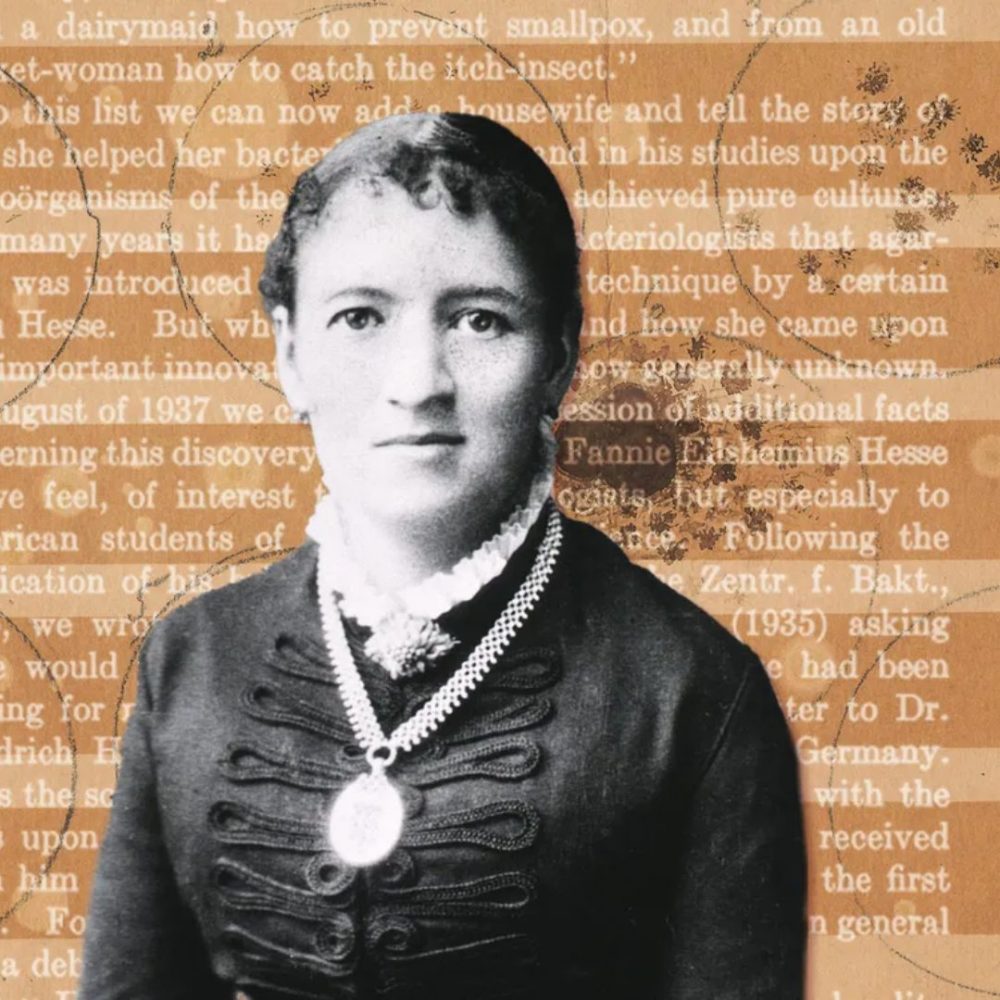
Agar: Science’s Unsung Kitchen Hero
Recommended for Science
Ever heard of agar? Of course you have – it’s in everything from your favorite gummy bears to life-saving vaccines. But have you heard of Fanny Hesse, the unsung heroine who brought this kitchen staple into the laboratory and changed the course of science? Get ready to be amazed.
The Pudding That Changed the World
In a world obsessed with grand discoveries and larger-than-life scientists, it’s easy to overlook the quiet revolutionaries. The ones who don’t seek the limelight, but whose ideas spark revolutions nonetheless. Fanny Angelina Hesse was one such woman, a culinary whiz whose kitchen experiments inadvertently changed the course of microbiology.
A Kitchen Scientist
Fanny wasn’t your average 19th-century housewife. Sure, she whipped up delicious puddings and jams, but she also had a keen interest in her husband Walther’s scientific pursuits. Walther, a budding microbiologist, was constantly wrestling with a frustrating problem: the gelatin he used to grow bacteria kept melting in the summer heat. It was like trying to build a sandcastle on a hot beach – a recipe for disaster.
“Walther, darling,” Fanny suggested one day, a twinkle in her eye, “why don’t you try using agar-agar? It’s what I use to make my jellies firm even in this sweltering weather.”
Agar-agar, a seaweed-derived gelling agent, was a common ingredient in Fanny’s kitchen, thanks to a neighbor who had lived in Indonesia. Little did she know that her simple suggestion would revolutionize the world of microbiology.
Agar: The Unsung Hero of the Lab
Walther initially doubted Fanny’s idea, but it turned out to be a stroke of genius. Agar-agar provided the perfect medium for growing bacteria – it was firm, transparent, and didn’t melt at high temperatures. Suddenly, scientists could easily isolate and study individual microbes, which led to groundbreaking discoveries in the field of bacteriology.
Agar revolutionized microbiology, allowing scientists to separate individual bacteria like grains of sand on a beach. They could finally pinpoint the specific microbes responsible for diseases, paving the way for life-saving treatments and vaccines.
A Forgotten Scientist
Unfortunately, Fanny’s contribution was largely overlooked at the time. Women in science were often relegated to the sidelines, their work overshadowed by their male counterparts. But history is slowly correcting itself, recognizing Fanny as an unsung hero of microbiology.
“It’s like Fanny was the invisible hand stirring the pot of scientific progress,” says Dr. Nandini Bhautoo-Dewnarain, a microbiologist who has studied Hesse’s life. “Her simple suggestion opened up a whole new world of possibilities for researchers.”
Fanny’s story reminds us that scientific breakthroughs don’t always happen in sterile laboratories. Sometimes, the most revolutionary ideas come from the most unexpected places. It’s a testament to the power of observation, curiosity, and the willingness to experiment – qualities that we all possess.
Fanny Hesse’s story is also a reminder of the countless women who have made significant contributions to science throughout history, often without recognition. Their stories are slowly being unearthed, shedding light on the crucial role women have played in shaping our understanding of the world.
A Legacy of Innovation
Imagine a world without agar. You couldn’t cook your favorite jelly dessert or develop life-saving vaccines. It would be like a kitchen without a stove, a garden without soil. Fanny Hesse’s unassuming brilliance built the foundation for modern microbiology.
Fanny’s story reminds us that innovation thrives in unexpected places, even the most humble settings. Importantly, it’s a testament to human ingenuity and the undeniable contributions of women in science.
So, the next time you enjoy a jelly dessert or hear about a new vaccine, remember Fanny Hesse. She’s the woman who revolutionized microbiology with a simple kitchen staple, proving that even the smallest ideas can change the world.
Watch a video
The Unsung Kitchen Hero Who Changed Science Forever: Meet Fanny Hesse!
Curious Times is a leading newspaper and website for kids. We publish daily global news aligned to your learning levels (also as per NEP 2020): Foundational, Preparatory (Primary), Middle and Senior. So, check out the News tab for this. We bring kids’ favourite Curious Times Weekly newspaper every weekend with top news, feature stories and kids’ contributions. Check out daily JokesPoke, Tongue Twisters, Word of the Day and Quote of the Day, kids need it all the time.
ME – My Expressions at Curious Times is your place to get your work published, building your quality digital footprint. And it is a good way to share your talent and skills with your friends, family, school, teachers and the world. Thus, as you will step into higher educational institutes your published content will showcase your strength.
Events, Quizzes and Competitions bring students from over 5,000 schools globally to participate in the 21st-Century themes. Here schools and students win certificates, prizes and recognition through these global events.
Sign-up for your school for FREE!
Communicate with us: WhatsApp, Instagram, Facebook, Youtube, Twitter, and LinkedIn
0 (Please login to give a Curious Clap to your friend.)
